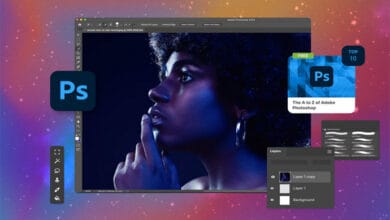
Have you ever struggled with rich text editing in HTML and wished for a simple and user-friendly solution? You’re not alone if you feel that way. Developers often find it challenging to create visually appealing and user-friendly content. The details might overwhelm you. Don’t worry. We’re here to help and support you through it all. We have the answer – a Vue-based HTML-rich text editor.
This guide will introduce you to Vue-based HTML editors, a great tool for making rich text editing easier. That’s correct! Just greet your ticket for easy editing. We’ll help you go from struggling with markup to mastering it. Get ready as we explore one of the top online Javascript editors and help you become skilled in rich text editing!
Choosing a JavaScript library
A few excellent editors stand out as leaders among Vue-based HTML editors. Froala’s editor is a well-known for its extensive feature set, it gives developers access to a user-friendly and flexible rich-text editing interface. These editors are flexible and can be customized to meet the requirements of individual projects with their wide range of features and settings.
Its reliable performance ensures a pleasant experience for the user, even while doing complex activities. Some examples of these are:
- Feature necessity
- Customization needs
- Performance expectations
Once you’ve chosen a JavaScript library, the next important step is to set up your development environment.
Setting up the environment
It’s important to set up your environment after choosing a JavaScript Library. Here are the main steps:
- Download or link files
To begin, download or link the JavaScript and CSS files of the library you have chosen. - Include dependencies
Make sure to include all the necessary dependencies in your project. For Vue-based projects, the main focus would be on Vue itself. - Organize file structure
To organize your project, make a separate directory for all editor-related files. This includes the files you download or link to, such as library files, as well as any configuration or customization files you create.
By following these steps, you’ll have a clean and efficient environment setup. Moreover, it will make your development process smoother and easier to manage.
HTML markup
HTML markup, underpinning any web page, bestows structure and substance to our content. It’s our first step in transforming a blank canvas into an engaging rich text editor:
- Establish the core
We kick things off by creating a ‘textarea’ element. This modest input field is where users will breathe life into their content. - Add value with UI components
To enhance our editor’s functionality and user experience, we incorporate additional elements such as a toolbar, status bar, and other interactive UI components. - Define identity and purpose
Our final markup step involves assigning unique IDs, classes, and attributes. It isn’t just about aesthetics; it sets the groundwork for effective interaction via JavaScript.
Now that we have set up our HTML markup let’s explore how Vue.js can make our text editor more dynamic and interactive.
Leveraging Vue features for rich text editors
When we start using Vue.js, we can quickly bring our React-rich text editor to life. Vue’s modular structure allows us to create reusable components for each part of our editor. Imagine having a unique toolbar or a customized emoji picker. Isn’t it cool?
Vue’s directives are also a game-changer. They can change DOM elements based on the user’s actions, making it easy and intuitive to interact with. Vue’s standout feature is its reactivity system. Data binding allows instant updates on the screen whenever our data is modified. It’s like magic! Just type in the editor and see your words appear instantly!
Handling user interactions
Handling user interactions in our Vue-based rich text editor is similar to carrying out a symphony of actions. To start, we need to be good listeners! We listen to what the user types and any changes made in the editor so the editor responds immediately.
After that, we handle formatting tasks. Users can format their text by making it bold or italic, changing the font size, or aligning it to the right. The editor easily handles these commands, making text styling simple.
However, it’s not only about text. Editors can handle user-triggered events such as uploading images, inserting links, and performing undo/ redo actions. The goal is to make the user’s experience smooth and easily understood.
Retrieving and processing content
After users have organized their content to their liking, they need to retrieve and process it efficiently. The first thing we need to do is get the HTML content created by the editor. The key is to retrieve the user’s input carefully.
Before using this content, we must ensure it is clean and safe. Validation and sanitization are essential for protecting against security risks.
Lastly, let’s explore efficient methods for storing and processing HTML content. It might include storing or processing data in a database on the server. Now that you’ve successfully retrieved and organized content, it’s time to explore advanced customization.
Advanced customization
Now is the perfect moment to enhance your rich text editor using Vue.js. Did you know? It has some fantastic techniques, such as mixins and plugins, that make it fun and easy to use. Vue plugins are like a toolbox for customizing your editor. They allow you to add reusable functionalities or even third-party features.
Vue’s single-file components are used to encapsulate and modularize custom editor functionality. HTML, CSS, and JS packets help organize and manage your code, making it easier to handle.
We have started using Vue.js to customize our rich text editor, making it a unique tool that fits our requirements. Before celebrating, we must test and fix any issues with our editor.
Testing and debugging
Consider the testing and debugging procedure a multi-stage health check for the editor.
- First, we ensure our editor works well on various browsers and devices. The compatibility test ensures that all users have a smooth experience, regardless of their technology.
- After that, we fix common problems such as inconsistent display or performance issues. Every problem solved brings us closer to a better editor.
- Lastly, we strengthen our efforts by using automated or user testing. Adding this extra layer of security enhances the functionality of our editor and ensures it is foolproof.
Conclusion
Froala’s editor improved an HTML editor by adding Vue for better text editing on our development journey. We have covered setting up the environment, using Vue’s dynamic features, handling user interactions, processing content, and exploring customization and testing.
We have covered a lot, but the Vue community and its detailed documentation are always available for further exploration and learning. As we finish this journey, remember that the world of rich text editing with Vue is vast and full of potential. Cheers to doing more with less coding!
FAQs
What are the advantages of using Vue for a rich text editor?
Vue.js simplifies creating and managing a responsive, rich text editor. It is flexible and easily fits into any project, allowing customization to meet specific needs.
What challenges might I face when using Vue for a rich text editor?
If you’re new to using Vue.js for a rich text editor, you might need help to grasp Vue’s reactivity system and component-based architecture. You may also need help with older browsers and difficulties with user interactions.



